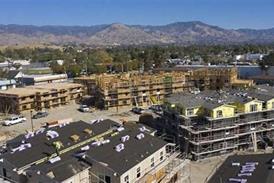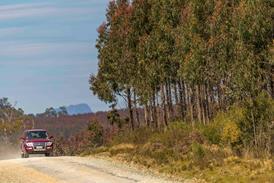Two of Europe’s biggest pension fund investors have become more wary of real estate markets but are still committing capital to the asset class.
The Netherlands’ APG and Germany’s BVK both sounded caution over the outlook for real estate when they spoke at MIPIM in Cannes, France.
“I see that markets are peaking at the moment,” said Rainer Komenda, head of real estate funds at BVK. “I’m not sure future performance will be as good as it has been.”
But, he said, BVK will be committing more capital to real estate this year. Earlier this week, IPE Real Estate reported that the €70bn German pension fund will be awarding new mandates to invest in real estate in the Americas.
Komenda was addressing 200 delegates at INREV’s annual seminar at MIPIM, just after the European real estate association revealed the results of its latest global capital raising survey, conducted with its Asian and US counterparts ANREV and NCREIF.
Robert-Jan Foortse, head of European property investments at APG, said he was “surprised” by the rosy outlook portrayed by the study. The survey – which was carried out before January’s stock market volatility and drop in oil prices – showed a record level of capital raising in 2015 and suggested that most fund managers expected this to grow in the coming years.
“There is a bit more caution out there; pension funds are holding back,” he said. “We are getting capital back from dividends, while also committing new capital, so overall this year we will be neutral, flat.”
But Foortse said that, if property continued to outperform other asset classes, capital would continue to flow into the sector.
“Fixed income investors are coming into the market and that will keep this market going for longer,” he said.
Fellow panelist Ian Gleeson, CIO at CBRE Global Investment Partners, said that, while real estate is currently perceived as expensive, the desire and need for income will to continue to provide real estate with capital.
“If you look at the trajectory we are on now, there is concern about pricing, but appetite remains strong,” he said.
The capital raising survey found that non-listed real estate funds were the most popular vehicle, representing almost half (47.3%) of total capital raised, followed by direct investment through separate accounts (24.4%) and joint ventures (13.3%).
Henri Vuong, director of research and market information at European association INREV, said this reflected a growing “breadth of opportunity” in the non-listed real estate sector.
BVK, APG and CBRE GIP all use a range of investment approaches to access the asset class, including funds, separate accounts, joint ventures and direct deals.
“We invest across the spectrum,” said Foortse. “We enter funds where we see the best possibilities as well as club deals too.”
Gleeson said more than half of CBRE GIP’s investments went into joint ventures last year.
“The landscape has definitely changed and you need to look for best vehicle,” he said. “There’s still clearly an appetite for aggregated capital.”
Gleeson said there are now range of options on offer to investors looking to get into market, providing a choice “much wider than in the past”.
The survey also highlighted the rise of real estate debt funds, a once niche market in Europe, which accounted for 9% of capital raising last year.
Komenda said BVK was undertaking direct lending in Germany and had less than €500m invested in mezzanien debt funds.
Foortse said APG had not committed capital to debt funds in 2015 because “banks are back”. APG had been one of the first-movers in the relatively new European real estate debt fund sector.
“Returns are not what they were,” Foortse said. “We were spoilt by the returns we had from mezzanine debt funds in 2012.”
Having said that, Foortse suggested a “turn in the market” in 2017 or 2018 could be the incentive to once again commit to debt funds.
Gleeson said debt funds had tailed off as “equity-type returns” increased. “It’s harder to find opportunities, but they will still remain a part of portfolios,” he said.








![CBRE Investment Management [Real Estate - Europe]](https://d15duu1h3gsd2d.cloudfront.net/Pictures/100x67fitpad[255]-90/P/Pictures/web/t/j/u/cbreimlogohorizoutlcleanedup01green_654324.jpg)







No comments yet